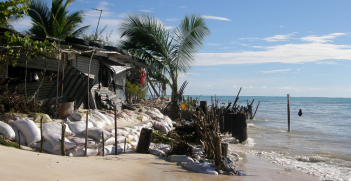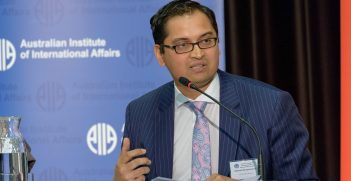Time to Reposition Australia’s Foreign Investment Regime

Foreign investment brings much needed capital, expertise, technology and links to international markets, however as Trade Minister Andrew Robb said, ‘the world is awash with mobile capital, but the competition is fierce … That is why we need the right resources in the right places’.
With the huge structural adjustment that the Australian economy has to effect as the commodities’ boom fades into the distant past, the ability of Australia to attract high levels of foreign investment has never been more critically important to driving employment, productivity growth, and innovation.
Foreign investment brings much needed capital, expertise, technology and links to international markets. Maintaining an open investment regime and an attractive investment environment is essential for growth in jobs and to maintain living standards. The government’s proposals to modernise Australia’s foreign investment regime, together with the A$53 million (approximately US$40 million) announced in the 2015 budget to increase Australia’s profile as an international investment destination are a tangible demonstration that the Australian government agrees on the need to encourage foreign investment.
There is a great deal of evidence that trade and foreign investment are inextricably linked. The OECD, in its recently revised Policy Framework for Investment, identifies a direct correlation between trade and foreign investment. The OECD recommends close interaction between governmental departments to ensure capitalisation of the benefits of trade-inducing foreign investment.
In Australia, trade policy — including initiatives like the recent trifecta of free trade agreements (FTAs) with Korea, Japan and China — is managed within the portfolio of the Department of Foreign Affairs and Trade. The foreign investment regime is the remit of the Department of Treasury, including the Foreign Investment Review Board and more recently the Australian Taxation Office.
The time is right for a fundamental re-positioning of the foreign investment regime in a way that directly recognises the connectedness of trade and direct foreign investment.
A standing inter-departmental committee — which formalises and actively manages the intersection of treasury, trade and foreign affairs policy and services a ministerial-level Foreign Investment Council — would be a useful addition to the national armoury for managing foreign investment policy that encompasses the links between trade and investment.
A first task would be to agree on a program of international missions to key investment destinations in the US, Western Europe and Asia to promote Australia as a key investment location and coordinate the facilitation of trade and investment. These missions should, at the same time, seek to educate key stakeholders about the operation of Australia’s foreign investment policy regime.
An inter-departmental effort, which would importantly be comprised of the Treasury and the Trade and Investment ministries, would look at the macro policy issues relating to foreign investment and actively attend to the intersections between trade and foreign investment policy. The inter-departmental committee would not consider the merits or national interest issues for individual foreign investment proposals, which would remain the province of the Treasurer under the Foreign Investment Review Board. The Foreign Investment Council and its inter-departmental advisors would be responsible for ensuring Australia crafted a consistent trade and foreign investment policy.
The current foreign investment regime requirements in practice mean that very few FTA investors even are able to utilise the higher thresholds now available to them as most, for tax efficiency and corporate governance reasons, will interpose structures between the FTA jurisdiction and the ultimate investment in Australia. These structures are commonplace, considered market practice and support, for example, investment in greenfield and brownfield infrastructure. Concerns about offshore structuring and the impact on tax revenues are a matter for Treasury in its capacity to regulate taxation matters, not only in the context of foreign investment.
The higher thresholds under FTAs should, in any case, be sensibly made available to all investment sources.
The attractiveness of Australia as an investment destination is not simply a matter of elevating investment promotion by Austrade and DFAT but also requires active engagement of the investment policymakers with authorities and business in important target countries, such as China and India, and proper resourcing.
Australia’s message to the world has to be that it is open to business from abroad within a framework that seeks to also protect the national interest. A coordinated education program would provide the Australian government with a forum to communicate the operation of Australia’s foreign investment regime and at the same time Australia’s expectations of foreign investment, including conformance with domestic regulatory institutions, such as the Australian Competition and Consumer Commission, the Australian Securities and Investments Commission, the Australian Taxation Office and environmental agencies in the governance of foreign investments (which apply equally to domestic investments).
As Trade Minister Andrew Robb has said, ‘the world is awash with mobile capital, but the competition is fierce … That is why we need the right resources in the right places’. An Australian Foreign Investment Council, with input from across the relevant ministries and agencies, would help to address these problems and project more effectively Australia’s strategic interests in this area of its international economic diplomacy.
John Denton is Chair of the Business Council of Australia’s Global Engagement Taskforce and Partner and CEO of Corrs Chambers Westgarth. Peter Drysdale is Head of the East Asian Bureau of Economic Research in the Crawford School of Public Policy at the Australian National University. This article was originally published in the East Asia Forum on June 14, 2015. It is republished with permission.





